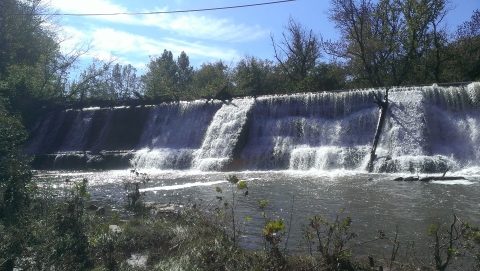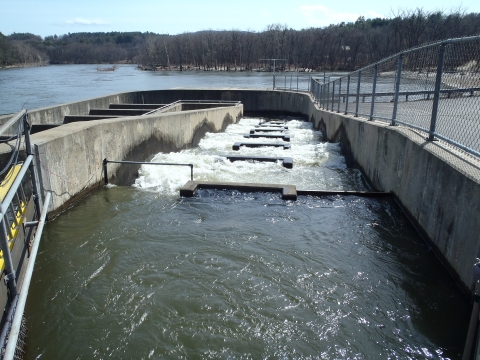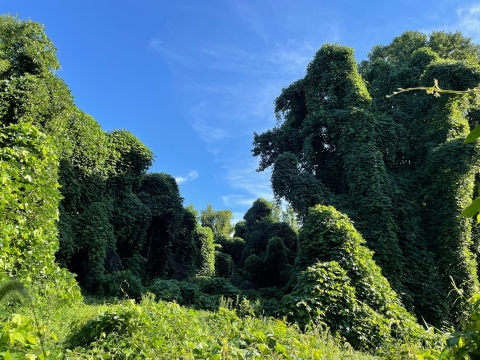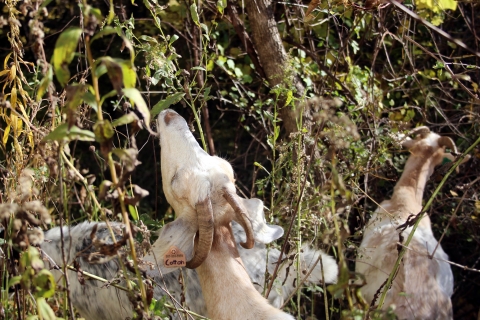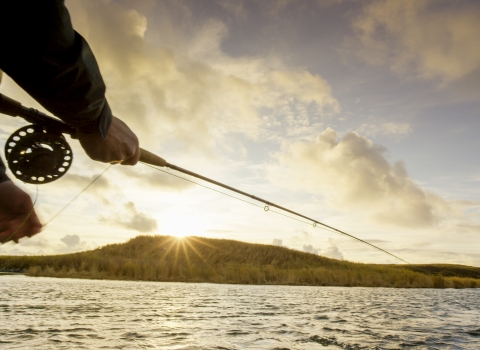“If you’re not failing, you’re probably not really moving forward.” - John C. Maxwell
You don’t have to look hard to find evidence of humans’ missteps in managing nature. From introducing invasive species invasive species
An invasive species is any plant or animal that has spread or been introduced into a new area where they are, or could, cause harm to the environment, economy, or human, animal, or plant health. Their unwelcome presence can destroy ecosystems and cost millions of dollars.
Learn more about invasive species to filling in wetlands, people have brought about many of the challenges wildlife and their habitats face today. Although, as individuals, we may not have caused these calamities, it is our collective responsibility to learn from and remedy the mistakes of our shared history.
That’s why the U.S. Fish and Wildlife Service is working with partners to undo the errors of the past by working with nature, not against it.
“Like the resource it seeks to protect, wildlife conservation must be dynamic, changing as the conditions change, seeking always to become more effective.” - Rachel Carson
Manipulating natural resources on a large scale often works against our own self-interest. Take water, for example. For decades, dams were touted as a modern miracle for their ability to produce hydroelectricity and supply water for irrigation and recreational and commercial boating. The U.S. government not only approved of them but directly funded their construction across the country.
Beginning in 1820, with the construction of wing dams (dams built into a stream to deflect the current) on the Ohio River by the U.S. Army Corps of Engineers, government-sanctioned dam construction increased rapidly throughout the 19th century. When Congress established the Bureau of Reclamation in 1902, governmental damming and irrigation only escalated.
It didn’t take long, however, for communities and governmental organizations alike to realize their mistake. Dams flooded valleys, displacing farmers and Indigenous nations. Fish migrations that once spanned thousands of miles were interrupted, and water quality rapidly declined.
While some dams still play important roles by providing hydropower to communities, damming revealed the importance of aquatic connectivity and reminded us that in many ways, nature knows best. Now we work closely with nature to balance the needs of waterways with those of local neighborhoods. Through innovations like fish ladders, culverts, and natural rock ramps, the Service is keeping waterways free of barriers to both people and wildlife.
Established in 1999, the Service’s National Fish Passage Program has worked with over 2,000 local communities, Tribes, private landowners, transportation agencies, and federal and non-governmental partners to restore America’s rivers and streams. To date, 3,400 barriers to fish passage fish passage
Fish passage is the ability of fish or other aquatic species to move freely throughout their life to find food, reproduce, and complete their natural migration cycles. Millions of barriers to fish passage across the country are fragmenting habitat and leading to species declines. The U.S. Fish and Wildlife Service's National Fish Passage Program is working to reconnect watersheds to benefit both wildlife and people.
Learn more about fish passage have been removed, reconnecting 61,000 miles of upstream habitat.
Naturally flowing rivers are less prone to damaging floods. By upgrading stream crossings to better withstand storms, communities are finding that barrier reduction improves not only access but their bottom line by reducing home, auto, and infrastructure damage during storms.
“When you realize the value of all life, you dwell less on past and concentrate more on the conservation of the future.”- Dian Fossey
Our manipulation extends to wildlife itself. Intentionally introduced or not, non-native plants can quickly change a landscape. Without natural population control like insects and herbivores to eat these plants, invasive species out-compete their native counterparts, undermining the habitat native wildlife have evolved to rely on.
Take for example, kudzu. Kudzu gained popularity in the 1930s when government officials encouraged southern landowners to plant the fast-growing vine to prevent soil erosion. Unfortunately, the vine quickly took over the South, infesting forests and fields, smothering wildlife habitat, and choking rivers and streams.
To combat “the vine that ate the South” the Service is using an assortment of management tools, including mowing, hand-cutting, herbicide application, and prescribed burning. Staff and volunteers at Rappahannock River Valley National Wildlife Refuge have even employed domesticated goats for assistance. Turns out these gluttonous goats can’t get enough kudzu, making them a fantastic natural solution.
The mistakes made with kudzu serve as an important warning that introducing non-native plants to new habitats is dangerous and should be done with extreme caution. Since its invasion, scientists and conservationists have prioritized planting native vegetation to protect against erosion.
“It really boils down to this: that all life is interrelated. We are all caught in an inescapable network of mutuality, tied into a single garment of destiny. Whatever affects one destiny, affects all indirectly.” - Dr. Martin Luther King Jr.
Colonial settlers once wondered if animals transplanted from their homelands would survive on a new landscape. Rarely did they question if the landscape could survive these animals. That question now occupies the minds of conservationists all over the world as international travel and trade has introduced new destructive animals to previously undisturbed environments.
In 1889, the large, semi-aquatic rodent known as nutria was introduced to the United States through the fur trade. These rampant rodents quickly mowed down vegetation, including crops and aquatic marshland shrubs and grasses, harming local farms and wetlands. Nutrias’ unique practice of devouring roots effectively prevents regrowth, leaving the landscape bare and vulnerable to sea-level rise.
Since the early 2000s, the Service has partnered with federal, state, and non-governmental agencies to eliminate nutria from Blackwater National Wildlife Refuge in Maryland. It has taken more than a decade of effort, but the refuge is finally nutria free.
In addition to projects that actively combat existing invasive species, the Service and its partners are working to educate the public about how these harmful plants and animals spread and what we can do to stop them, including cleaning boats and gear and rehoming pets.
“I have not failed; I’ve just found 10,000 ways that won’t work.” - Thomas Edison
Failure is a gateway to new knowledge. Sometimes, we discover the truth only after learning that what we once thought was true was false. We recognized the importance of aquatic connectivity through the disruption caused by dams. We learned the dangers of introducing non-native plants and animals when they overtook our landscapes.
Every day, scientists discover new ways we are failing in our interactions with nature—but failing does not make failure. Failure is the inability to learn from those mistakes. To advance conservation in the face of mass extinction and climate change climate change
Climate change includes both global warming driven by human-induced emissions of greenhouse gases and the resulting large-scale shifts in weather patterns. Though there have been previous periods of climatic change, since the mid-20th century humans have had an unprecedented impact on Earth's climate system and caused change on a global scale.
Learn more about climate change , we must continue to use our failures as informative rungs on a ladder toward a more-sustainable future.

